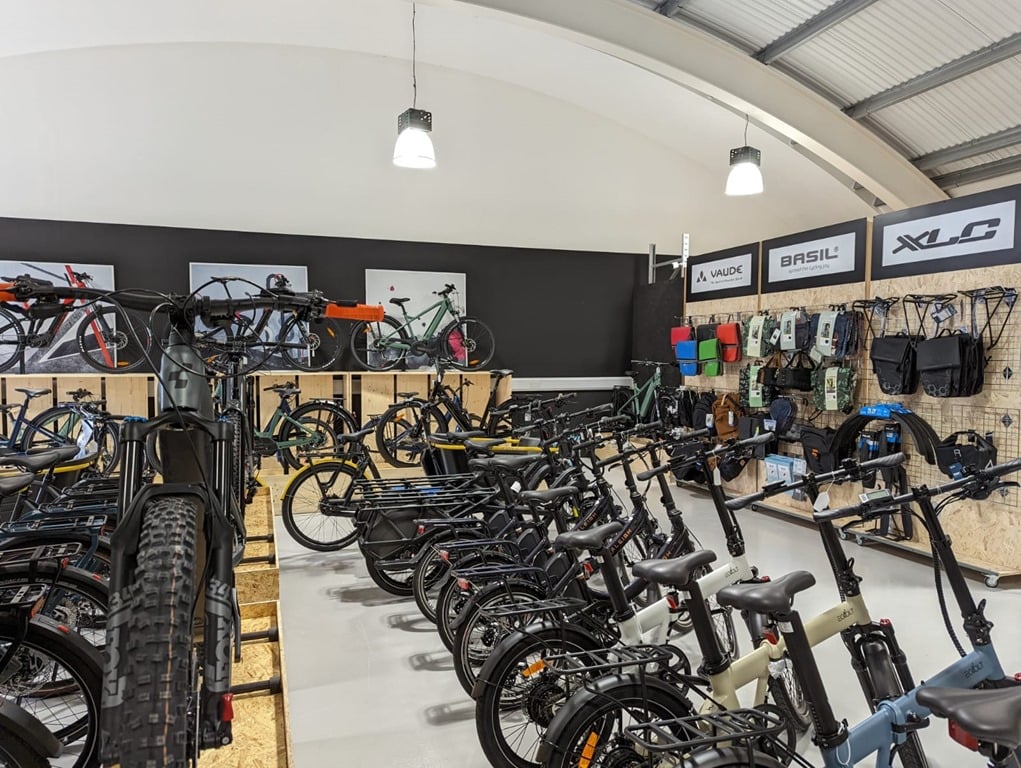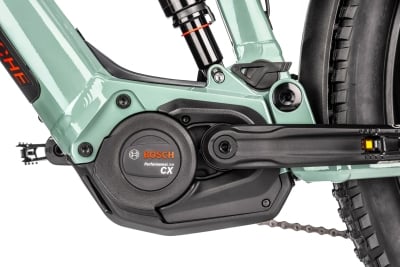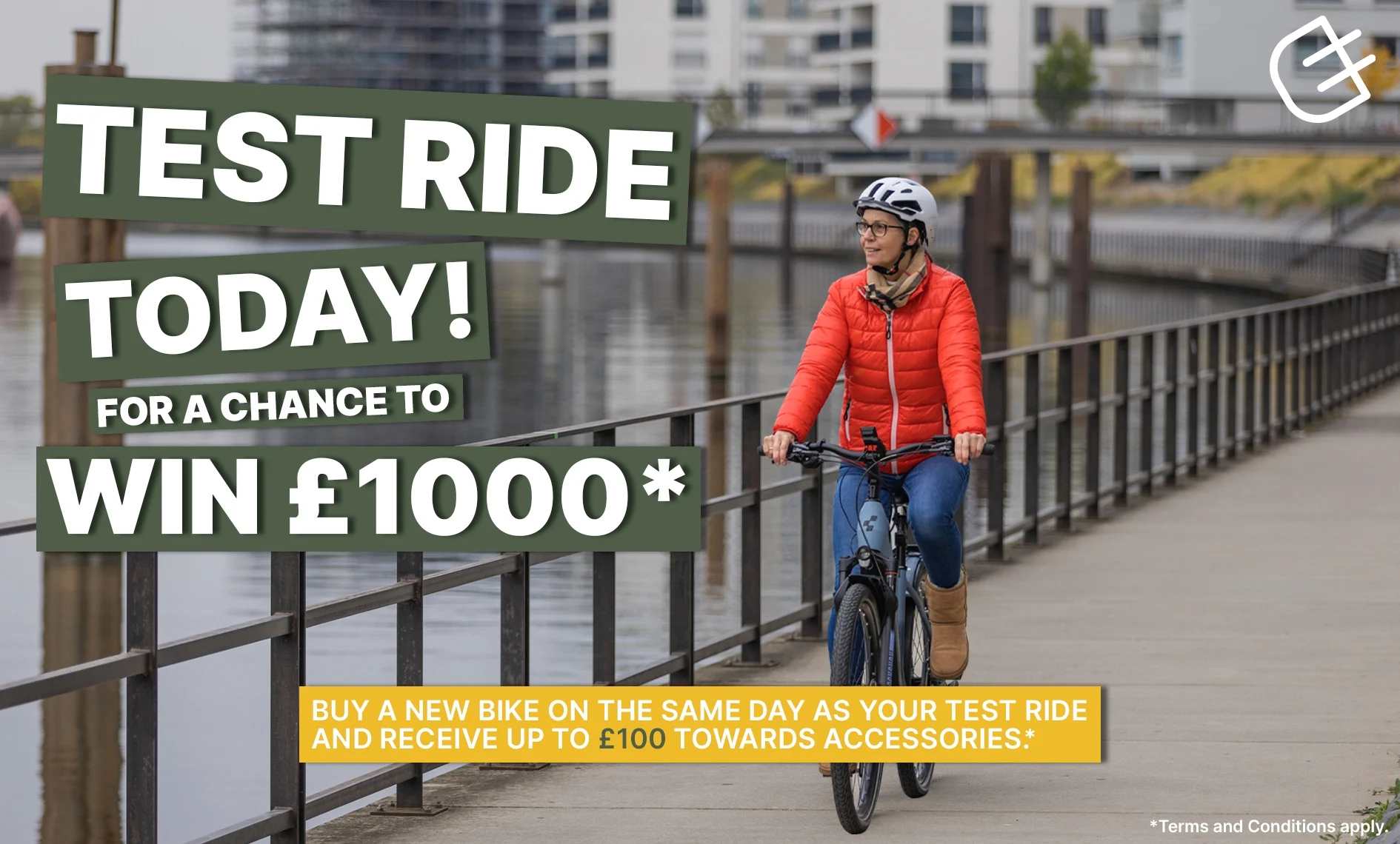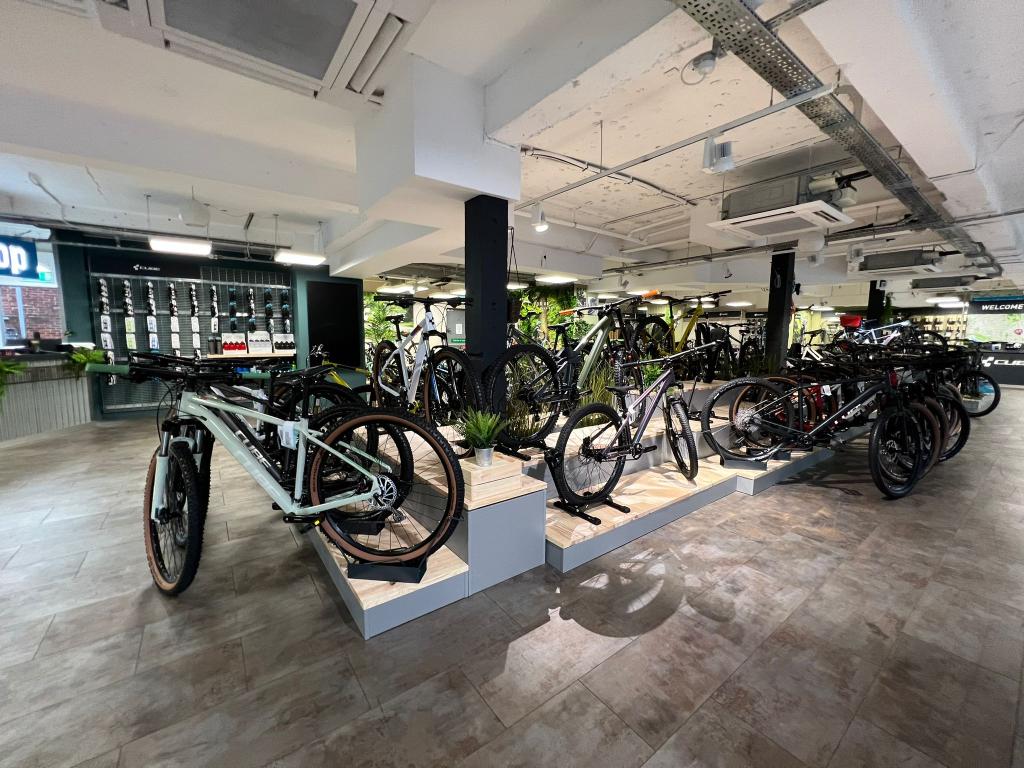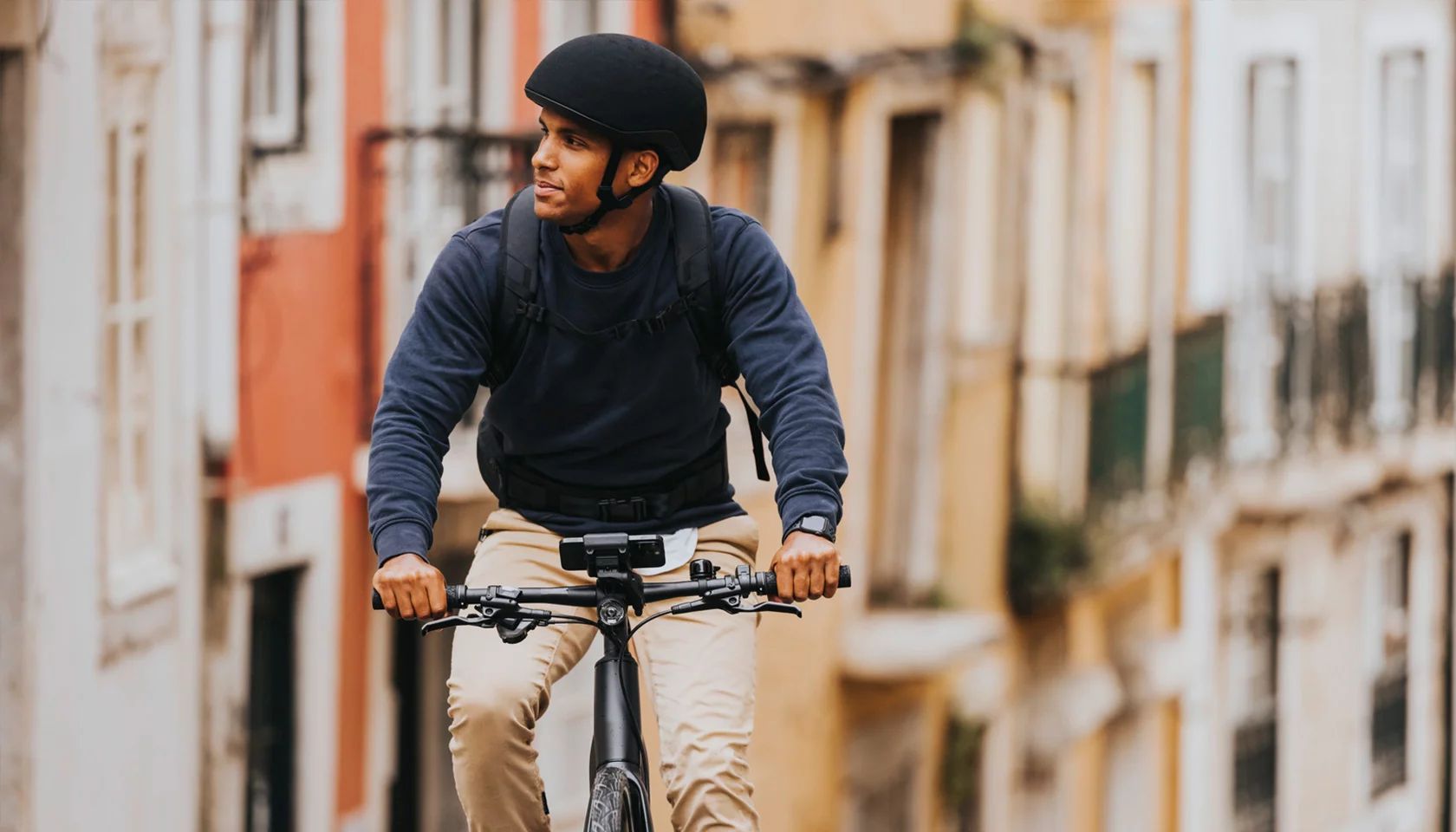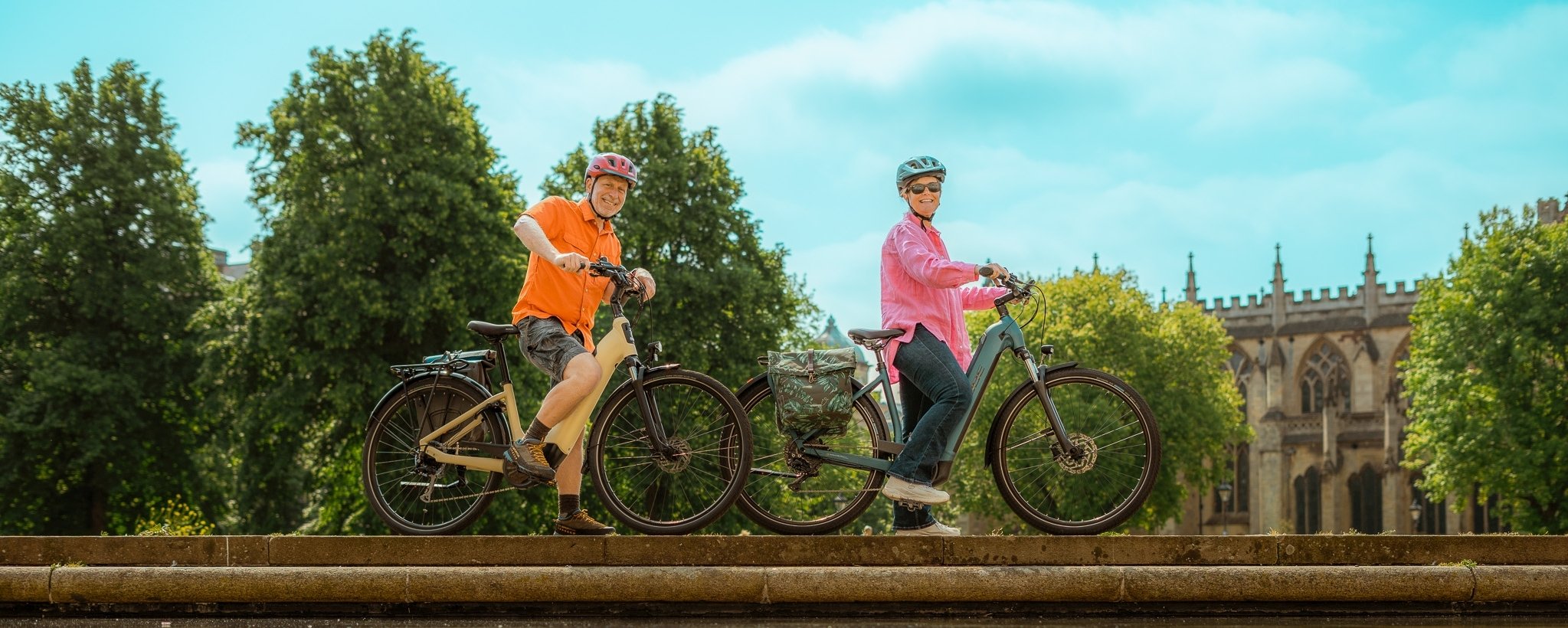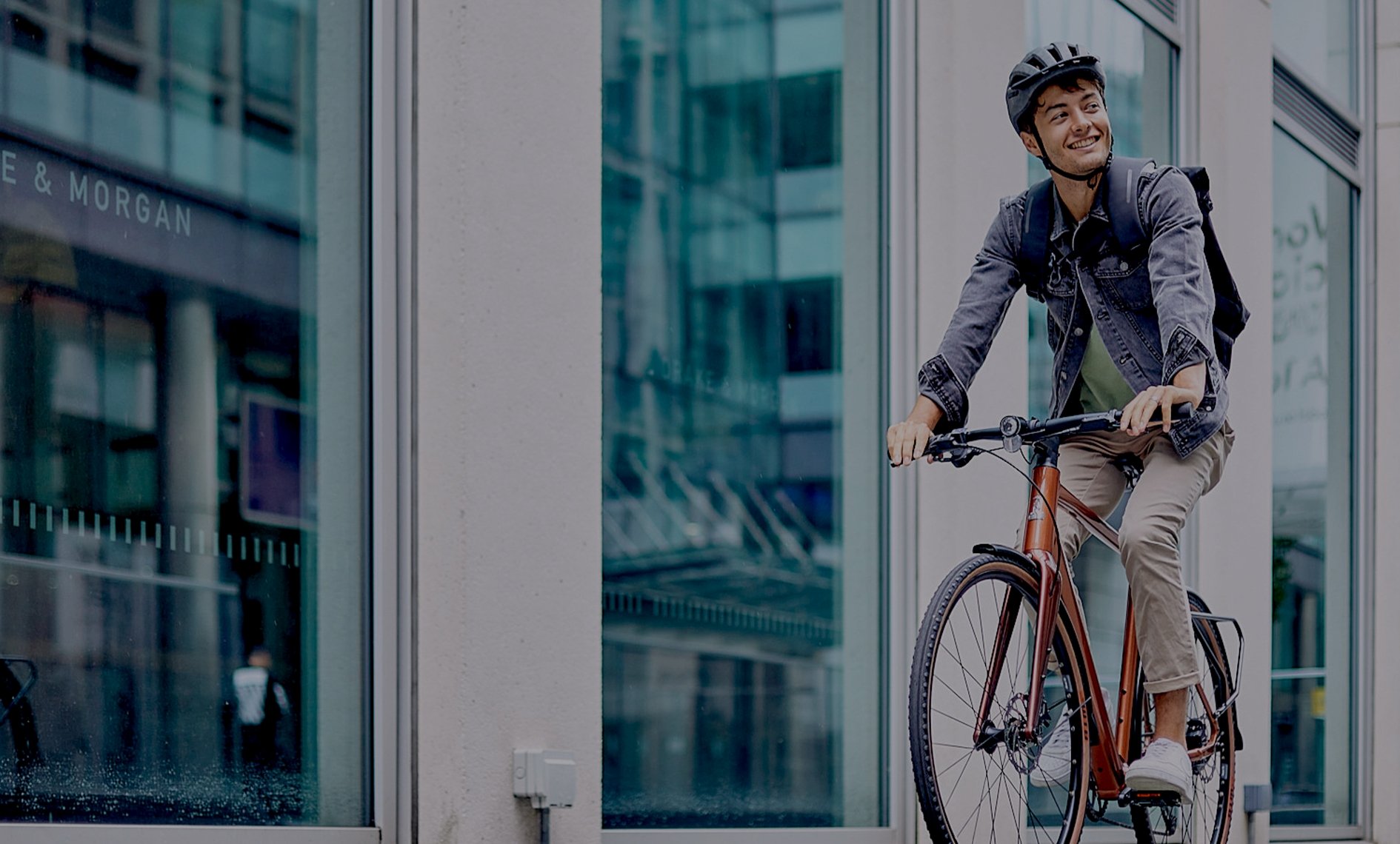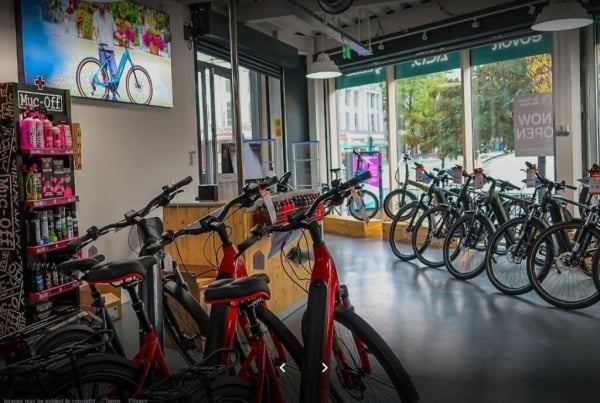New to Cycling? Advice for beginners

The last few years has seen many more people getting outside and enjoy riding a bike, either for the first-time or having dusted off their old bike after many years.
Cycling can be daunting if you don’t do it regularly but with some tips from our expert Paul Prince, as a new rider or seasoned, but long out of the saddle, you will quickly gain confidence. Here are some key tips to get you started:
Before you go
Pump your tyres up.
Probably the easiest maintenance task you can do on a bike is pumping your tyres up to the right pressure. But what is the right pressure? Well that’s easy too -it’s written on the sidewall of your tyres, take a look.
You’ll notice the tyre manufacturer has a recommended range rather than a specific pressure. That’s so you can adjust the tyre pressures according to the conditions. Hot, cold, the terrain, your weight for example.
TIP: If you’re going somewhere that might be damp or a bit slippy, don’t pump your tyres up too hard. If it’s dry and you want to ride as smoothly as possible, fill them up. Mid-range is a good starting point if you are unsure.
It’s obvious but never pump your tyres up above the recommended pressure as you risk the inner tube pushing the tyre off the rim and exploding.
Paul says: Floor pumps are so much easier to use than a hand pump.
Set your saddle height.
Saddles that are too low make it hard work. Your knees won’t thank you either. Saddles that are too high are inefficient and will hurt your hips and back.
Correct saddle height is important not only for comfort but for pedalling efficiency too. Here is a simple method to set the correct saddle height:
- Whilst stood next to the bike, set the saddle to the height of your hip bone. Ensure the saddle is not extended past the minimum insertion mark on the seat post. If this is the case you may need to consider a larger frame.
- Using a wall, table, chair or friend holding the bike for you, sit on it with both feet on the pedals. Rotate the pedals back so that the crank arms are at 12 and 6 o clock. On the lowest pedal move your foot forward so just your heel is on the pedal. In this position you should aim for your leg to be straight but not locked out. Keep adjusting the saddle height until your leg is straight.
- Once you have set your saddle height place your foot on the pedal at 6 o clock in your normal riding position. At this point your leg should have a bend at the knee.
- This method provides a good starting point for, what should be, a comfortable and efficient riding position for most people. This is of course is just a guide so feel free to make any adjustments you need for your own comfort.
Paul says: Everyone’s anatomy is different. Don’t be afraid to test moving your saddle up and down 5-10mm. You may find it more comfortable.
Get your riding position right.
A very simple rule of thumb is, when in your typical riding position look for the handlebar stem obscuring your view of the front wheel hub. Your arms should have a slight bend in them.
Paul says: Cycling isn’t supposed to be painful. If you do get any pain or niggles, pop into a store and one of our Team will be able to help you.
Pre-Ride Checks
Before every ride you should do some basic safety checks of your bike. This is often called an M check because as you move around the bike from back to front it forms the shape of an M. You can view a short video showing you how to do an M-Check on our Ebike pre-ride checks page.
Paul Says: I've been cycling for over 35 years and I still check my bike before every ride. Safety first
Dress Appropriately
Weather can change quickly so master the art of layering up so you can take them off or put them back on to cool down or warm up quickly. If the weather is extreme (high winds, icy cold or very hot temperatures), question whether it’s actually worth it.
Paul says: Layer up and protect your hands and feet. Use your common sense in bad weather.

Further Reading
What to take
Water and food.
If you’ve ever felt empty and sick from dehydration and a lack of energy you have had ‘The Bonk’ and there is no worse feeling on a bike. Take fluids and some ride food with you. Snacks like a banana, flapjack or jelly babies will help refuel you on the go.
If you are going far, energy drinks bars can help you avoid cramp or offset energy loss.
Paul says: Eat little and often. If it’s hot, plan to drink a lot more. If it’s a long ride, research and plan to stop and have snack or light meal at a café.
Padded shorts?
New cyclists often think they need huge padded saddles to protect their posterior but that’s really not the case but can help some riders. Ultimate comfort comes from the shape of your saddle but a pair of padded shorts or inner shorts will help.
Paul says: If you choose a padded short or inner short option, don’t wear underwear because they will chafe.
Cycling gloves and mitts
Gloves are necessary to protect your hands. If you are a beginner, you will grip the bars a bit tighter until you gain confidence and without gloves your hands will quickly get sore. A padded glove or mitt is recommended.
Paul says: Always look after your contact points on the bike. Your bum, your hands and your feet.
Lights and a lock.
Even if you only plan to pop out for a short ride, if there’s any chance you might be delayed, a puncture for example, beyond dusk, have a set of lights fitted to your bike. This is more important in Winter
Carrying a lock is handy too for any planned or unplanned shop visits or café stops. Never assume your bike is safe, even if you leave it unattended for just a moment.
Paul says: If I stop and leave my bike unattended I will always lock it up, even if I will be 2 mins. Try and keep it in sight at all times.
Tools, spares and cash.
A basic multi-tool could get you out of a hole if have a problem on a ride. Throw in a spare tube, levers and a mini-pump and you will be covered for the most common issues that arise. Emergency cash or a card are useful too as well as your phone.
Paul says: If you don’t know how to use your tools or fix a puncture, take time to learn it’s a useful life skill to have.

Where to go
Start local and keep it short.
For your first ride, try and find a local, traffic-free route. If its short, do multiple laps. Keep it short and use it to get used to the bike. Turning the bar, gears etc.
Paul says: Don’t worry about distance, start with time. 15 mins and build it up, 30 mins, 45 mins etc. Stay away from steep hills until your confident using your gears and your fitness has improved.
Find some ride buddies.
Cycling alone is great but in a group can be even more fun. If you can find a local club or group that has introductory rides or friends that will go with you. Perfect. It’s safer and you will gain confidence and be able to ride further, more quickly.
Paul says: Riding in a group is skill of its own you won’t be able to get riding alone
Map it out.
If you want to plan a route there are a lot of free online mapping tools you can use to help you.
Paul says: I send my partner a link of my route, so she knows where I am going in case of any problems.

What to do
Learn to use your gears.
Correct gear use is important if you want to venture further and into the hills. If you don’t use them properly you will tire quickly or end up walking your bike up the hills.
Paul says: Practice up and down your street.
Work out what assistance you need
On an Electric Bike it's easy to use the assistance it gives you as a kind of electric gear box rather than use your gears. It's important you use your gears first and assistance second. This will extend your battery range on a ride and reduce the wear on your chain and gears.
Paul says: Ebike assistance is the most use on hills and from standing starts. Practice in each mode first.
Pedal steady.
No matter what terrain your are riding, uphill, downhill or on the flat you shouldn’t be pedalling too fast or too slow. Correct gear use is key to pedalling at the correct rate. Aim for a pedal stroke and a half every second or 70-90 rpm.
Paul says: Practice your pedalling while learning how to use your gears
Be Confident.
If you do need to ride in and around traffic be assertive. If you ride in the gutter you are more vulnerable. Ride out from the curb. Take primary position in your lane.. You are safer and more visible. Most drivers will be patient and will overtake safely.
Paul says: Build up your confidence on traffic free then light traffic roads first
Explore
One of the great benefits of riding a bike is being able to explore. Go and see places you’ve never been before.
Paul says: I love finding new roads. You’ll be surprised what you can find sometimes.
What do when you get back home
Keep it clean.
Regular bike maintenance will reduce the wear and tear on your bike and ultimately save you money. Read our guide to cleaning your bike.
Paul says: Keeping your chain and gears clean is really important.
Keep it safe.
Make sure your bike is stored somewhere safe. Even if it’s indoors, lock it up.
Paul says: It’s always worth making sure your bike is covered on your Home Insurance
Tell your mates.
Be proud of yourself for going for a ride. Apps such as Strava and MapMyRide on your phone will help you keep a record of where you have cycled and how many miles you’ve racked up. Share them on your social media, tell your mates. You might get them to have a go too.
Paul says: I record all my rides. It’s great to look back on them if you save them with pictures
Did you like this Article?
Subscribe to our Newsletter now. We will send you no more than one email a week which will include offers, news and our latest promotions
Please select all the ways you would like to hear from :
You can unsubscribe at any time by clicking the link in the footer of our emails. For information about our privacy practices, please visit our website.
We use Mailchimp as our marketing platform. By clicking below to subscribe, you acknowledge that your information will be transferred to Mailchimp for processing. Learn more about Mailchimp's privacy practices here.
About the Author
Paul is our IT & Technical Operations Manager and has been cycling for over 35 years with over a decade of industry experience as well.
Paul started racing when he was 16 years old and has raced all over the UK on the road, track and offroad. In 2009 he opened his own cycle shop and ran that for six years until he took a brief break from the industry before returning in 2017.
He has hung his racing wheels up now preferring to ride socially with the odd event. Touring is a new passion. He likes to pack up his panniers and go on a short tour and write about it on his blog.
Paul lives in North Worcestershire and has worked for The Electric Bike Shop since 2020. He is one our most experienced cyclists and industry professionals.
.jpg)
